It’s a brave new (technological) world in broadcast news and Local 600 camera crews are in the thick of it. By Pauline Rogers.
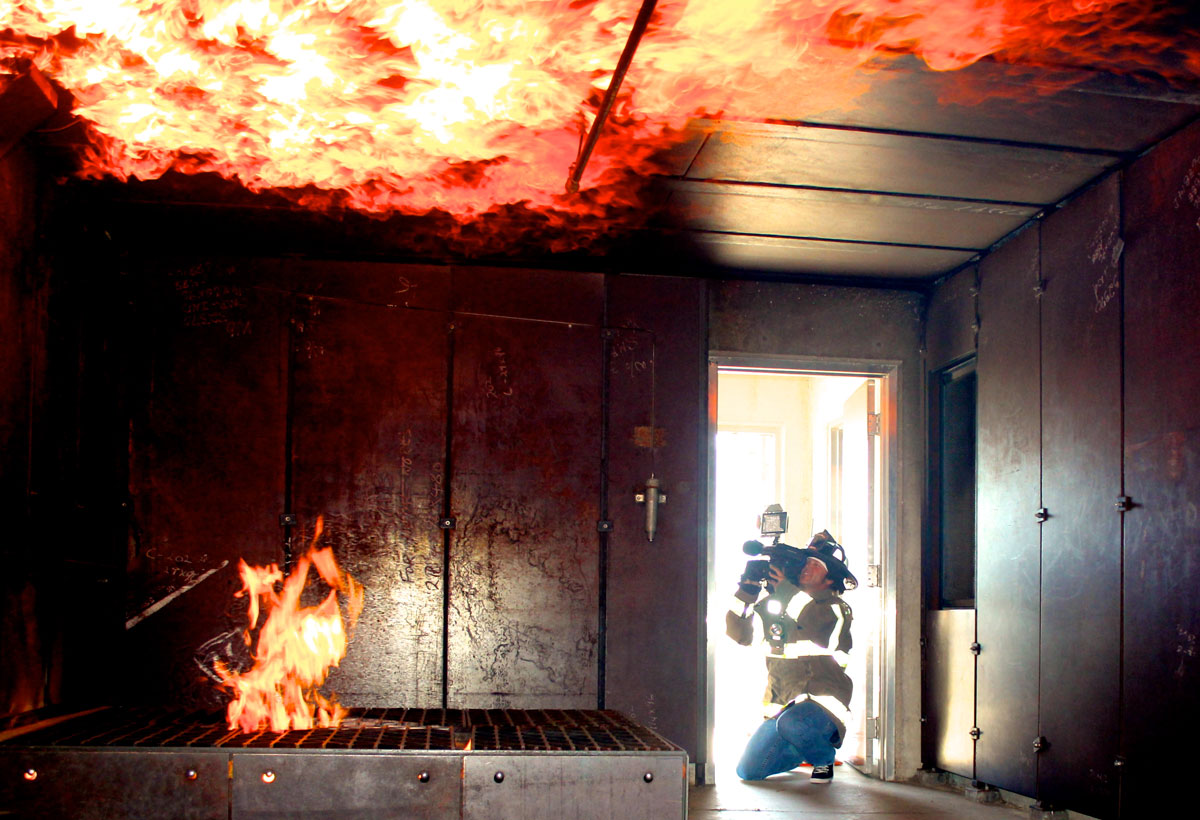
Broadcast news has come a very long way from the days of Edward R. Murrow’s famous radio sign-off – “Good Night and Good Luck” – heard at the outset of WWII when decent, freedom-loving people were uncertain they would even see each other the next day. Nowadays the news barely pauses for nightfall, streaming into our lives 24 hours a day, seven days a week, 365 days a year.
Gone are the days to rush home to see Dan Rather, Tom Brokaw, or any other legendary anchorman, fill us in on global events during the dinner hour. Now it’s news on demand, as we all simply turn to our mobile devices whenever we are hungry for the latest crisis. That means that was once an industry driven by pedestal camera in-studio productions and location shoots with large, complex trucks, is now mostly live you-are-there reportage, captured with everything from handheld video cameras to GoPros and iPhones. For our September Broadcast TV themed issue, we wanted to visit with various Local 600 News Photo Journalists around the nation, who are responsible for feeding the omnivorous beast that is today’s news industry.
Like Local 600 Shop Steward Terry Haggart, who has worked on Good Day Sacramento (KMAX CW31) since 1995, when it was first developed. Initially, when Good Day Sacramento launched, it used large format tape low-resolution tube cameras that “you could literally ruin if you pointed at a bright light too long,” Haggart laughs.
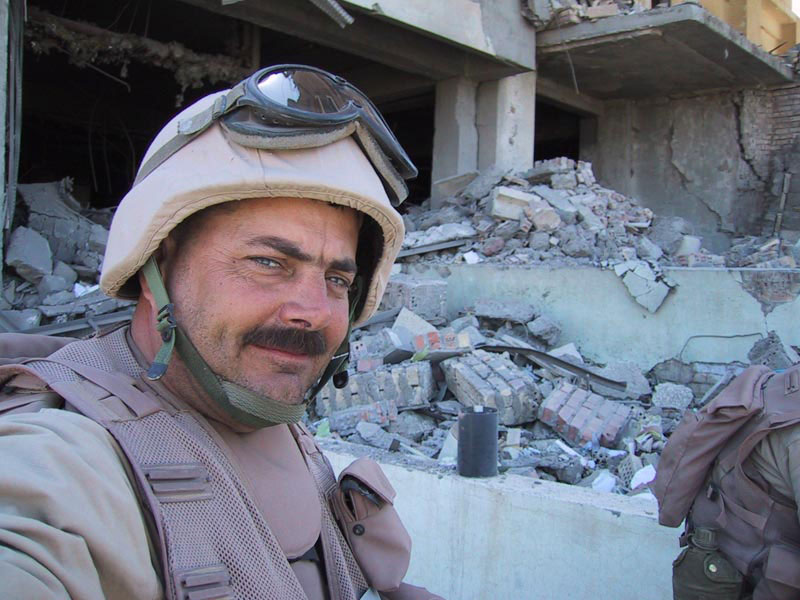
Today, the show’s five-and-one-half hours of live broadcasting (seven days a week) is shot with High Definition 1920×1080 Sony XD cameras with a hard drive SxS card that is the size of a stick of gum. Haggart also carries a variety of HD Mini cameras like the GoPro Hero 3+ and Liquid Image EGO.
“I love to give the viewer a perspective that is generally unattainable from the human eye,” Haggart describes. “The new technology has allowed me to take the viewer to places they never get to see. It’s really brought this industry to a new level.”
KMAX CW31, a CBS owned and operated station, now boasts a fleet of over 10 live trucks including a mobile live unit that can report traffic and breaking news on the go with two internal cameras and a rooftop camera that rotates and pans in a 360-degree motion, operated by a passenger with a joystick. “We can literally drive up transmitting live pictures to our viewers,” Haggart marvels. “I am now also using a LiveU and TVU system, which is basically a live truck in a bag. It is a 25-pound backpack device that transmits live High Definition Television signals through cellular bandwidth.”
Haggart admits he’s always been a bit of an extreme sports adrenaline junkie; and with this new small format capture technology he’s done live shots from offshore race boats, riding motorcycles, snow skiing down mountains, moving trains and parachute jumping from flying planes. “The possibilities are endless,” he says.
But with this new freedom, there also comes a downside.
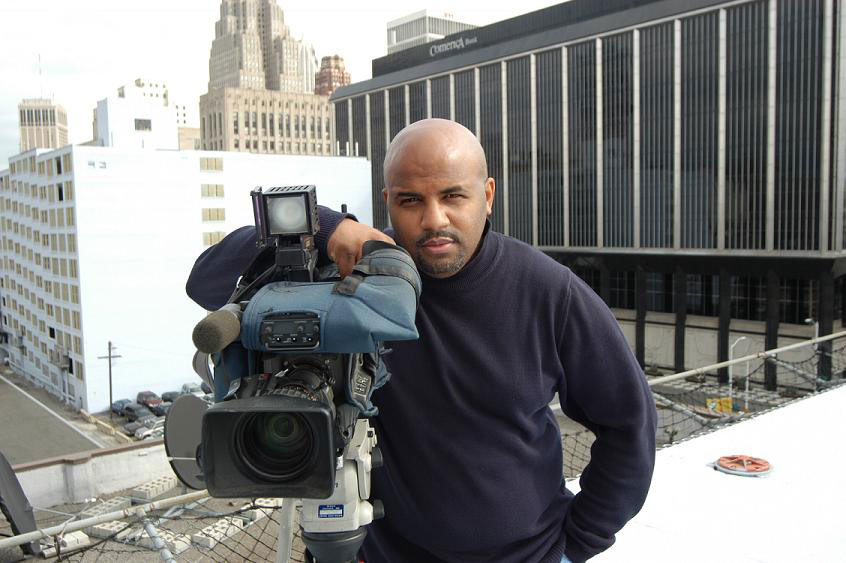
“I’ve seen unregulated camera-carrying quad-copter drones being used over crowds of people,” he cautions. “I personally own one but they are currently off limits to use at our news station. It won’t be long before new laws and regulations will be coming out as they will get into the hands of the wrong people, used for the wrong reasons. It’s a shame because [drones], when used properly, could be a huge asset to professional photojournalists.”
One of the challenges Haggart often must face is what he calls the “instant live shot,” and situations where news producers will want live pictures, while not fully understanding certain limitations of the live situation.
“Whenever a new photojournalist comes to work with us, I always emphasize the importance of safety and making proper judgment calls when out shooting,” Haggart relates. “Breaking news is often based on dangerous situations – riots, fires, floods, and shootings. It can be so easy to get caught up in the moment, when you are filled with adrenaline and being pressured to feed back live pictures. Ultimately, we are own judges in the field, so it’s important to make sure safety is the first priority.”
In Washington State, KING5 television news photojournalist David Wike now also chases developing stories with any new tool on the market. The 30-plus year veteran says that to keep up with the story, he and his colleagues are “much more” than news photographers.
“We report, drive and operate live trucks, and edit our stories,” Wike describes. “We cover western Washington State from the Kelso area of the Columbia River all the way to the Canadian border. Not to mention with Mount St. Helens looming. Depending on the subject or event you may find me almost anywhere, with the Seahawks recently in New York, for example, or embedded with the 555th combat engineer group in Iraq in 2003.
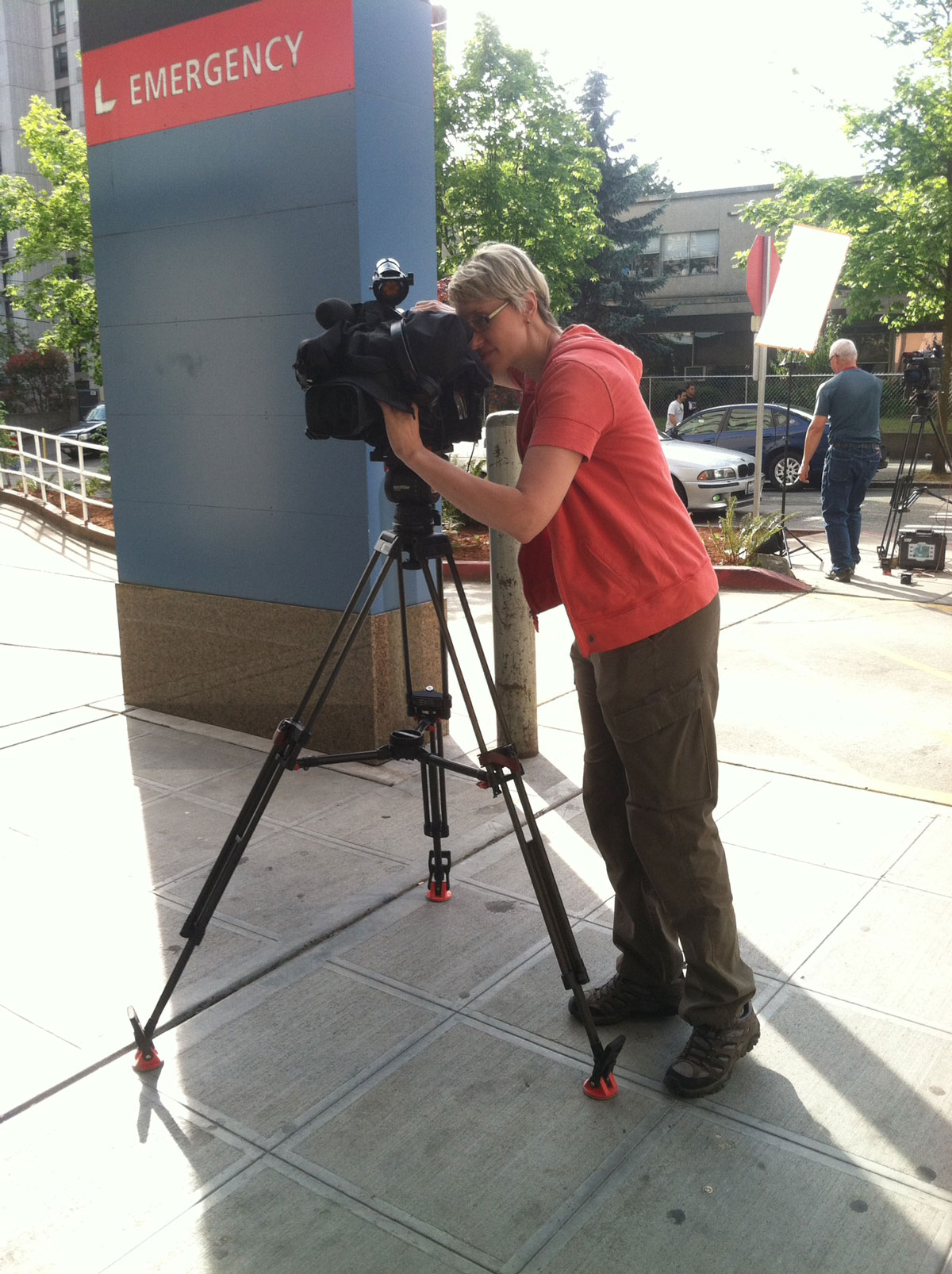
“Most of us shoot with Sony SxS cameras,” Wike continues, “and Canon or Fuji long zooms. We record onto removable SxS cards and then download the video files, either into our main server at the station or onto portable laptops that we carry with us in our news cars and edit the video into news stories using Sony non-linear edit software. Stories from the field are then fed via live trucks with satellite or microwave capabilities, digital backpacks, or FTP via our mobile Wi-Fi units. The trick is how fast we can transfer the files and how good can we maintain the HD quality.”
Wike keeps a GoPro and Mini DV camcorder in his equipment bag for POV shots or even as backup to the regular news-cam. “You just have to be prepared for anything,” he insists. “The digital backpacks that are replacing the live trucks, while a good thing, still have limitations and that is hard to make producers understand.
“On a given day I can go from a large gas leak in an Eastside neighborhood to a motorcycle accident following an high speed chase on the interstate. I cut some video of the first on my laptop and FTP it in for our noon show. The other example I brought back and it was ingested into the server for the evening news. That same day, I loaded into a live truck and did a story on a sex predator working the ferryboat system. It’s crazy.”
And in today’s digital landscape, Wike is also expected to capture still images for the station’s website and Twitter feed. “The trick is finding time while concentrating on job one to capture the event on video for your news story,” he says, “and still take the time to craft intelligent and accurate bits for the Web and Twittersphere.
“But,” he cautions, “it’s really the pressure to compromise quality that’s my biggest fear. We’re still great storytellers, but the viewing audience, and even our own producers ,just want volume – the iPhone and YouTube-video is now the new standard.”
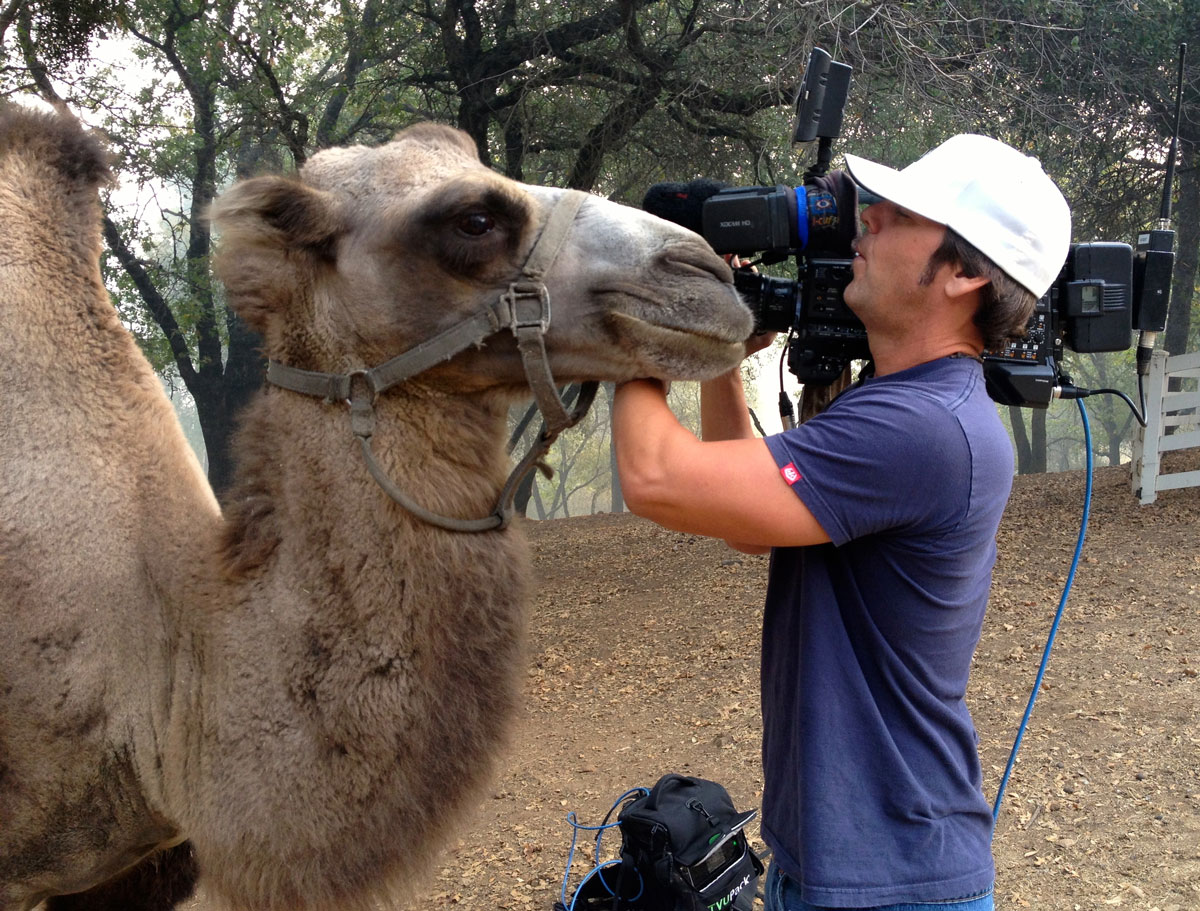
Kelly Daviscourt of KIRO, Seattle, agrees that her duties in broadcast news broaden considerably with each passing year. “When I started working in Seattle, 16 years ago, we had a truck operator, photographer and reporter,” Daviscourt shares. “But the new digital technology has changed all of that.”
For the May Day parade and protest this year, Daviscourt carried a LiveU backpack for over four hours while following marchers, protesters and police up and down the streets and sidewalks of Seattle. “We shot live interviews and live reports every few minutes all while avoiding pepper spray and some hostile protesters,” she describes.
“Live streaming and the need to feed the Web is a new and vital part of our jobs,” Daviscourt continues. “Long gone are the days of just going live during a regular scheduled newscast or breaking in to regular programming. It’s live for news conferences, breaking news, and any ‘newsworthy’ event, and the backpack/portable live gear allows for this.”
Daviscourt says she’s having to use her own mobile devices ever more regularly.
“We gather information about the news events by using social media and the Internet,” she relates. “We network with possible victims, suspects and witnesses. And we can immediately inform our television viewers, Facebook friends and Twitter followers. There is a lot of information [jail rosters and police reports] available online from businesses and government agencies. We gather information in the van while driving to the scene. It is an intense, non-stop pace of news gathering and telling that has become a necessity in this ‘information now’ world we live in.”
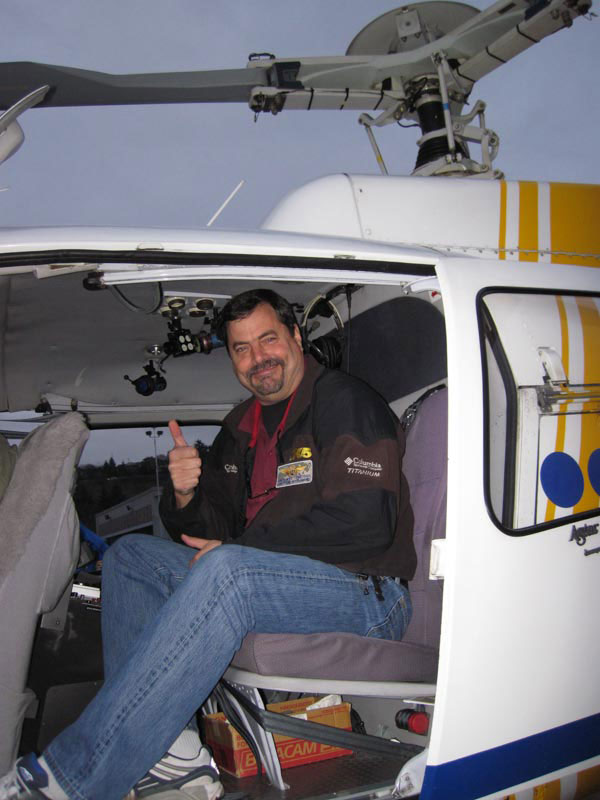
In Portland, News Photojournalist Bob Foster feels the same kind of pressure. “We edit most of our own material,” he remarks. “That’s a lot different from when I started in the 1980s, where the IKAGAMI 77 [which ran off a battery belt] and 79 [which didn’t] were three tube video systems that sometimes required registering by an engineer. These cameras were attached with a 25-foot long umbilical cord to a heavy [and unreliable] SONY BVU 100 video recorder, or to a BVU 50 [lighter but even more unreliable].
“For the past two years, we have been shooting with SONY BVW 500 cameras, which record HD onto SxS cards – about the size of a couple of sticks of gum,” Foster says, echoing other leading edge Guild shooters. “We got all the expansion boards, again, and, again, have the most versatile camera in the market when it comes to things like courtroom pool feeds.”
Foster describes such “pool feeds” as an exercise in implementing a workflow that incorporates four different television stations shooting on four different formats.
“It’s like reinventing the wheel every time there is a courtroom pool situation,” he smiles. “We’re still using Grass Valley Edius® 6.06, which seamlessly uses not just these different formats, but the GoPro H264 codec, smartphones, web downloads, stills, etc.”
In Detroit, MI, Smart Phones have become a key part of newsgathering, as Sunny Shields, news cameraman and Local 600 representative at NBC, explains.
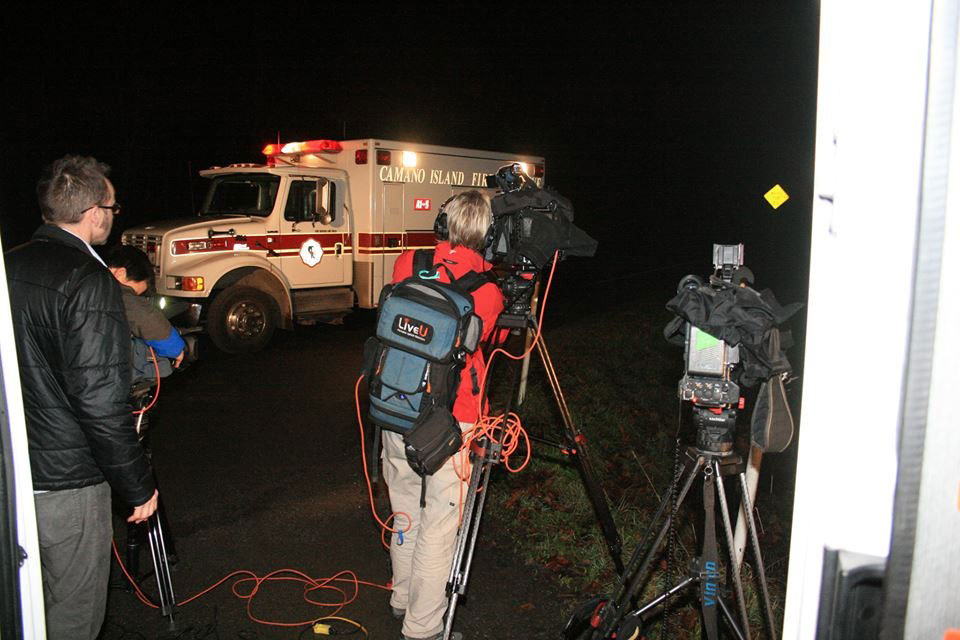
“Last winter, a bad storm came through while I was making a one-hour trip back to the studio,” Shields remembers. “On the freeway, my reporter and I witnessed countless cars and trucks off the side. But instead of pulling over and getting my camera from the back of the truck, I grabbed my iPhone 5 and recorded the massive amount of snow falling, accident after accident and even shooting my reporter in the passenger seat doing various ‘teases and stand-ups.’ All while driving, and yes, I was wearing my seatbelt doing 10-20 [mph] in the heavy snow and felt I was not in danger.”
Sheilds recorded seven 60-second video clips with his Smart Phone and e-mailed them back to the station. Once he arrived, he sat down with his reporter and put the news story together. “The quality that came out was as if I shot it off of our current capture, the Sony PMX 400K XDCAM HD,” he states.
In fact, as often both shooter and reporter, Shields is constantly on the move – driving to different cities to gather elements that he can piece together in the ENG live truck, editing with Grass Valley Aurora DNE editing system, and then feeding it back out to the station via microwave. “There are days where creativity is out the door because time is of the essence to get it back and ready to go Live for our 4, 5, 6 p.m. newscast,” he admits. “Producers want two to three teasers, which can be really time consuming as you try to get the back story for the newscast.”
Shields says the biggest challenge in TV News today is just trying to keep up with new technology, “because after six months to a year, another model will hit the market, and you have to re-program yourself to learn this new method,” he says. “And, because some news stations across the country are short staffed, training on new cameras and editing systems are scaled down to a one-day class – thereafter, you have to depend on the product manual because they can’t afford to have you off the streets for so long.”
But Shields also admits that new technology can be creatively liberating, as in his recent iPhone shoot. “There’s also the freeing ability to use LiveU and Dejero backpack devices for streaming live video,” he counters. “It’s the future – potentially eliminating the need for television stations to spend money on news vans. But that’s a little further ahead, still in use sporadically, depending on the situation.”
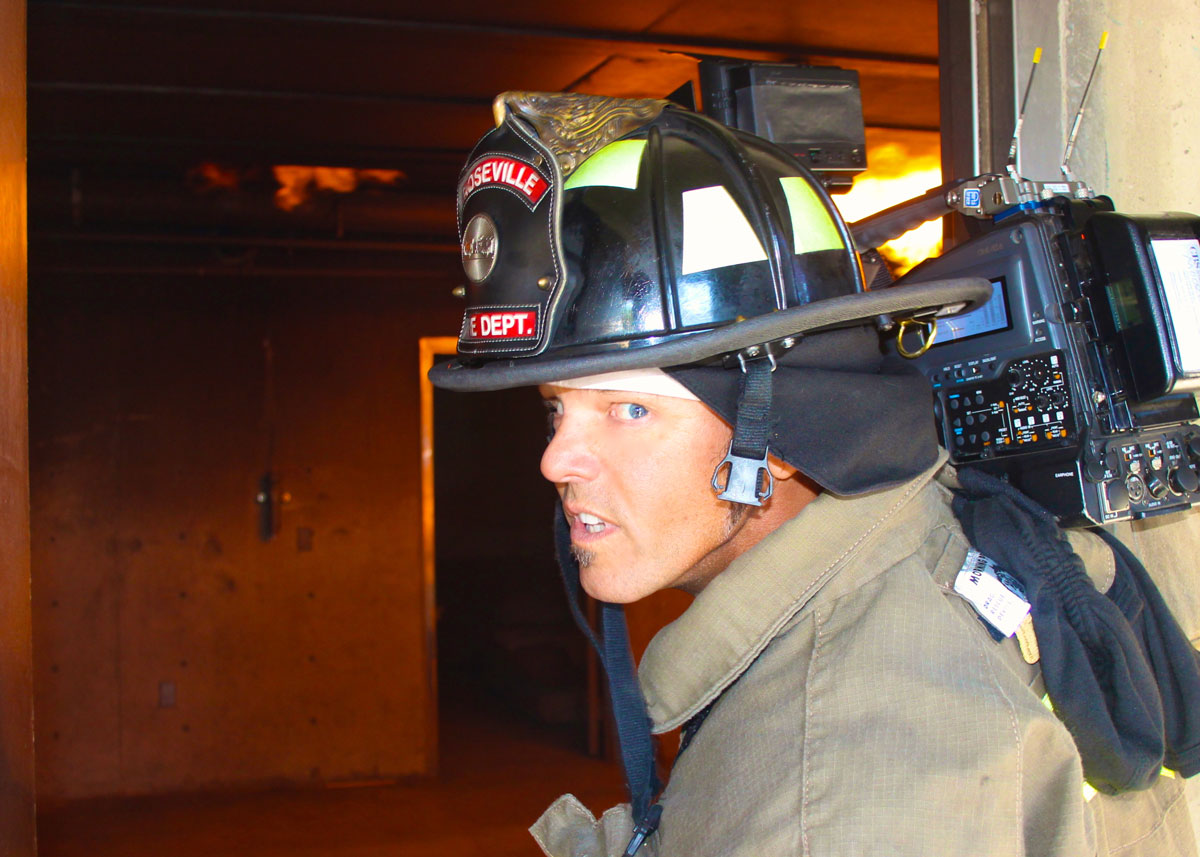
Shields’ use of the LiveU backpack is typically for court cases, press conferences, and live talkbacks. “Union rules require, while going live ‘inside’ a building,” he adds, “that two photographers must be on site. However, with a LiveU backpack, only one photographer is needed. Another reason for using the LiveU in court cases and press conferences is that we can livestream it back to the station’s website for our viewers.”
Broadcast news, in whatever form it’s consumed – radio, TV, Website, mobile streaming, etc. – will always rely on experienced Guild camera men and women as the backbone of the industry. But, as Terry Haggart notes, his role is always changing.
“When explaining my job to someone unfamiliar with my career,” Haggart concludes, “I would say: ‘my camera is my brush and the world is my canvas. And in today’s world I am definitely producing more paintings than ever before!” he laughs.
“But, whatever my personal feelings, the future of news is all about Live TV and less of the high end, top quality human-interest stories that once were so common. And that means that wherever the stories take me these days, I’m often just sticking my brush in the paint can and flinging it on the canvas.”
Still, Haggart, adds, after 20 years as a TV journalist, he can’t imagine any other career path. “What other job allows me to broadcast live images of the devastation from the [recent] 6.1 earthquake in Napa [CA] one day and then be sent the very next morning to do a live shot with bowtie-wearing guinea pigs that do tricks? This job never gets old.”
